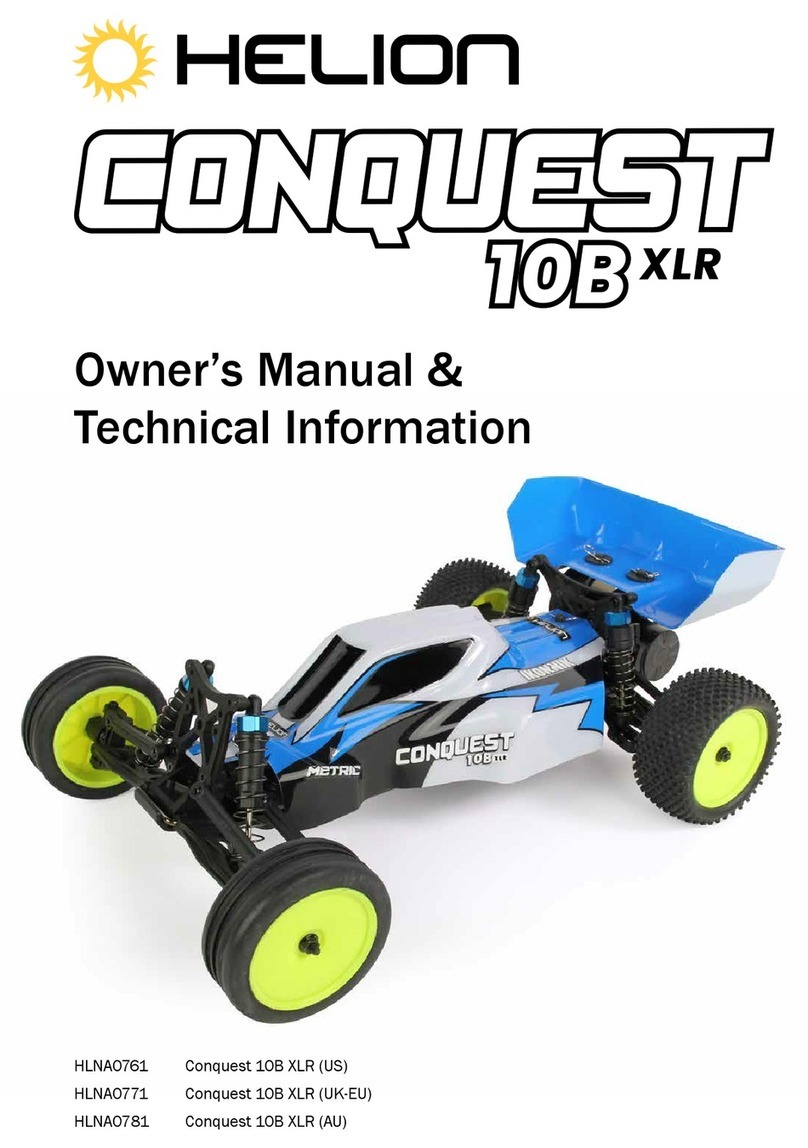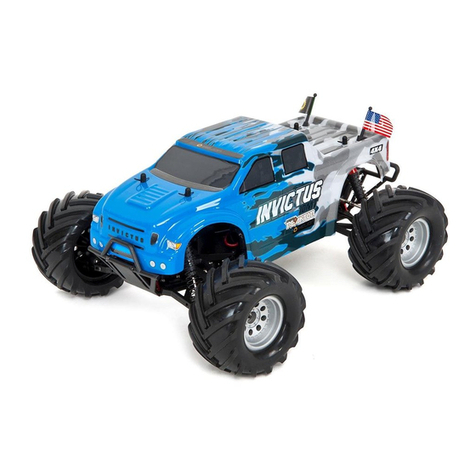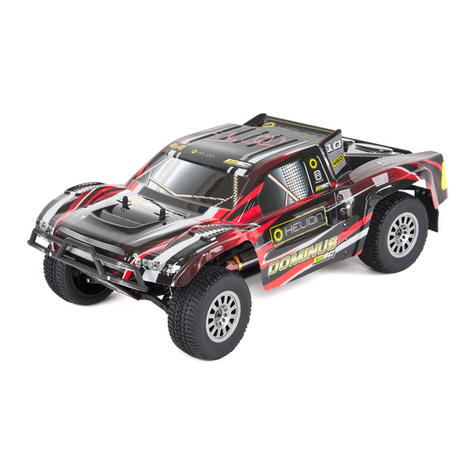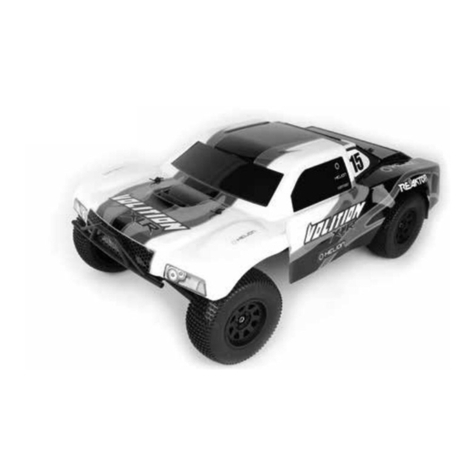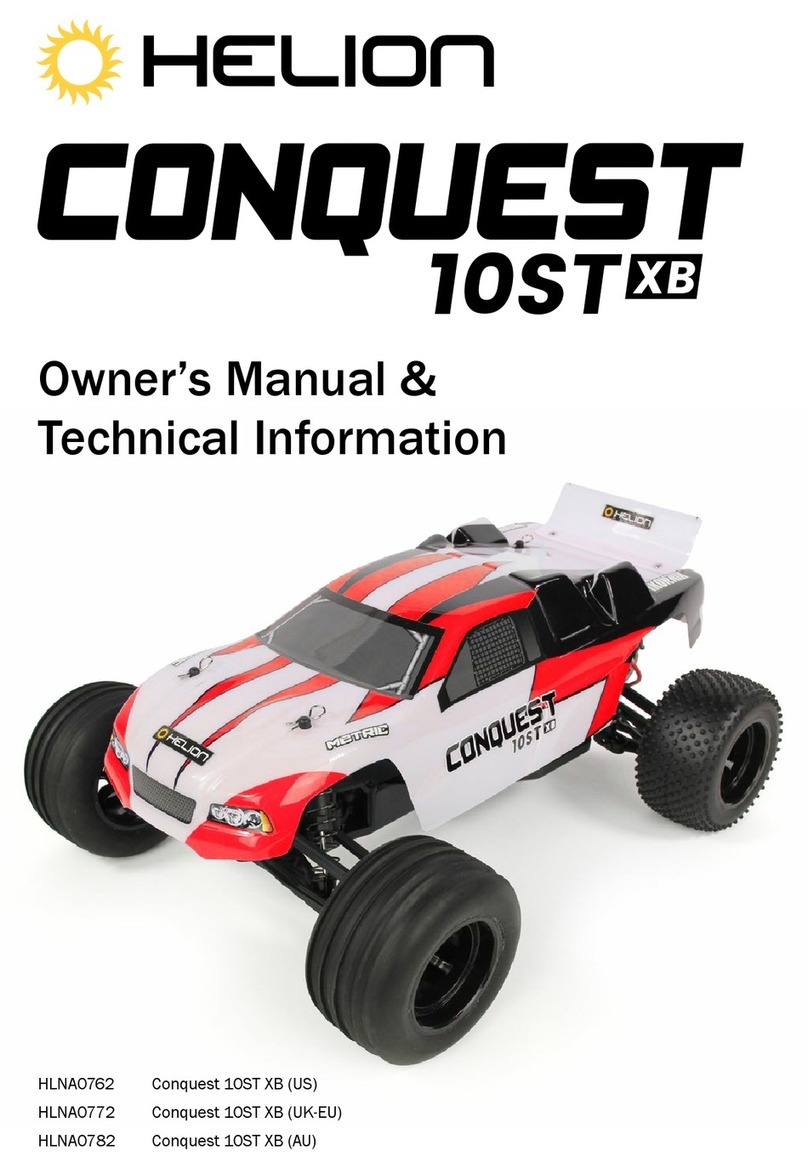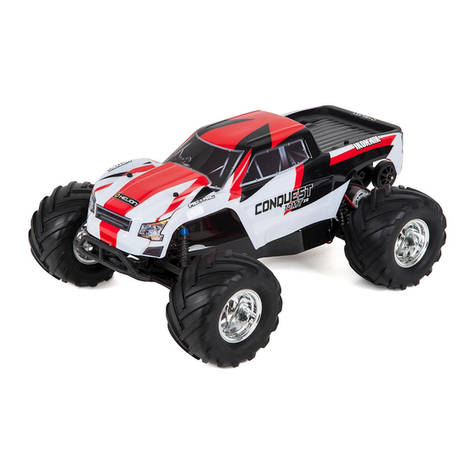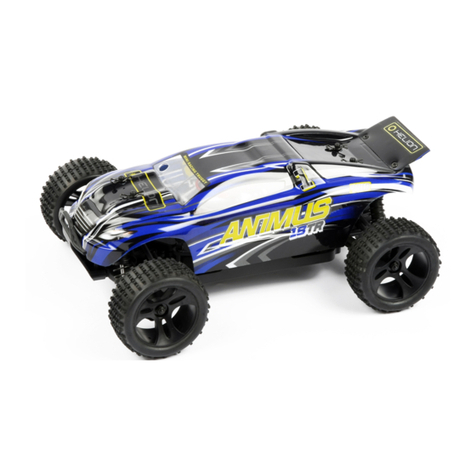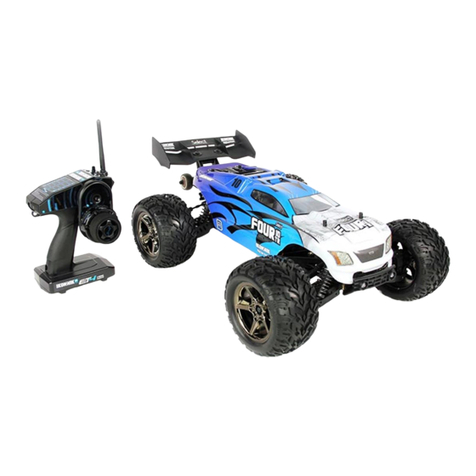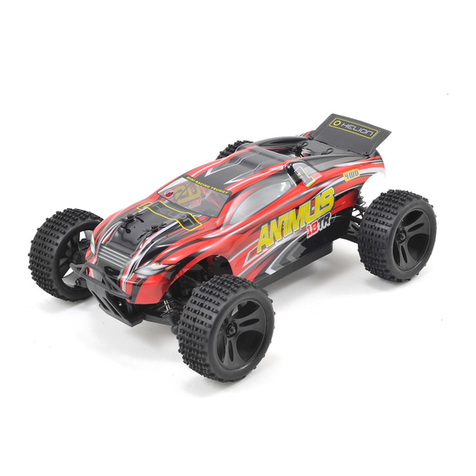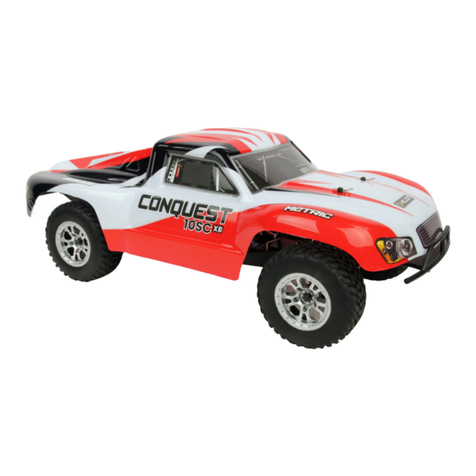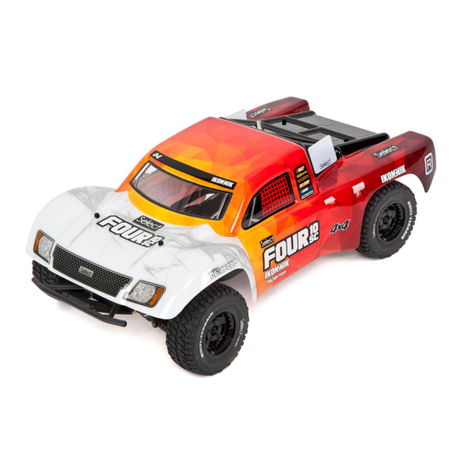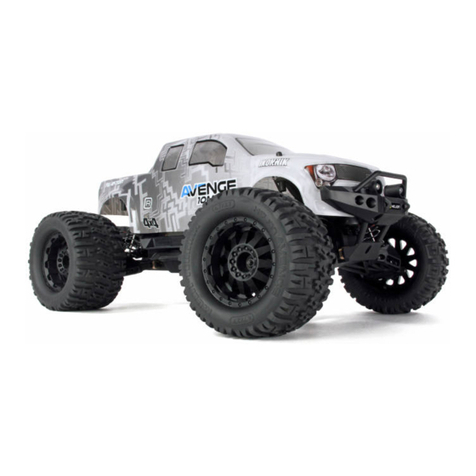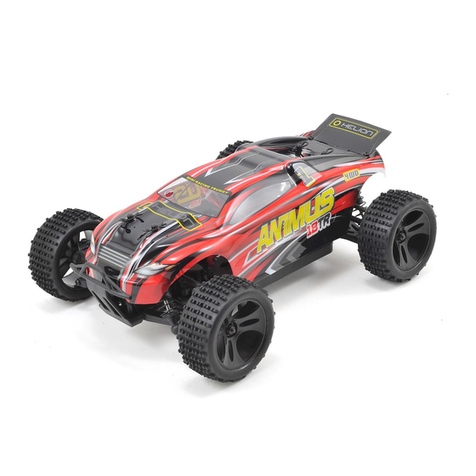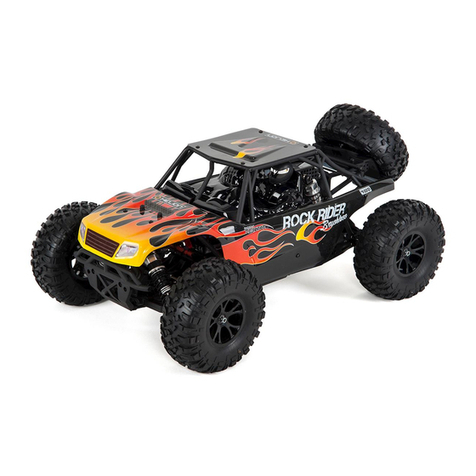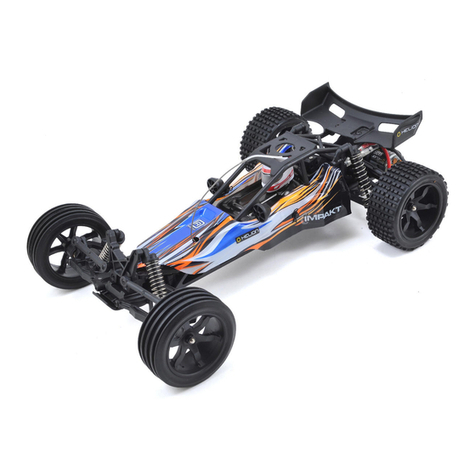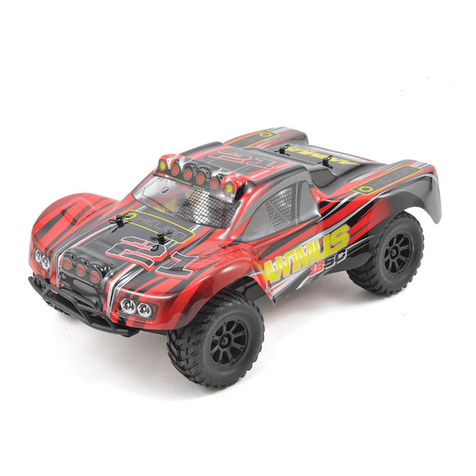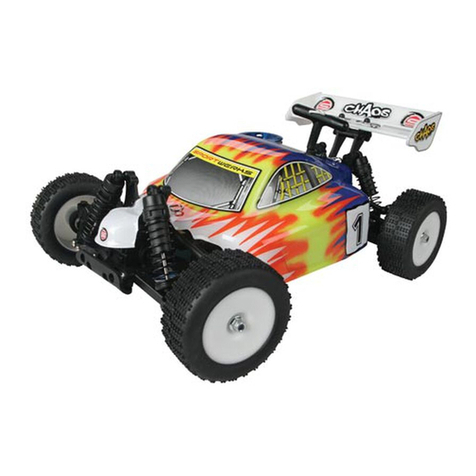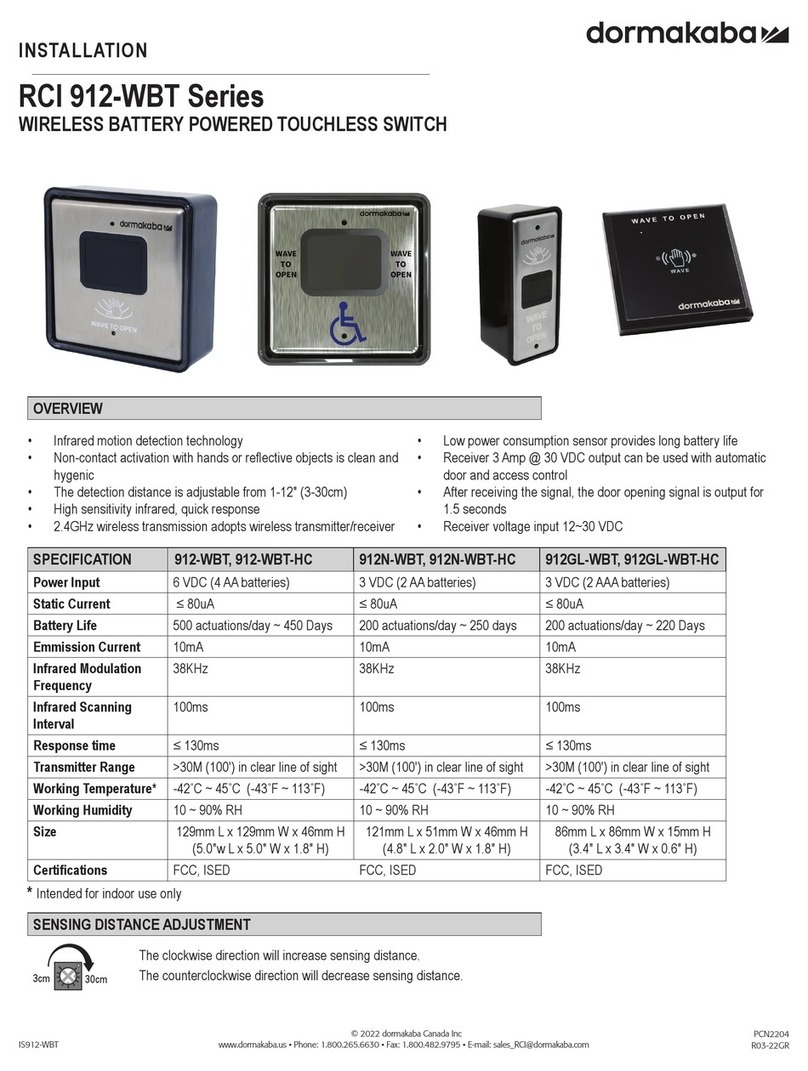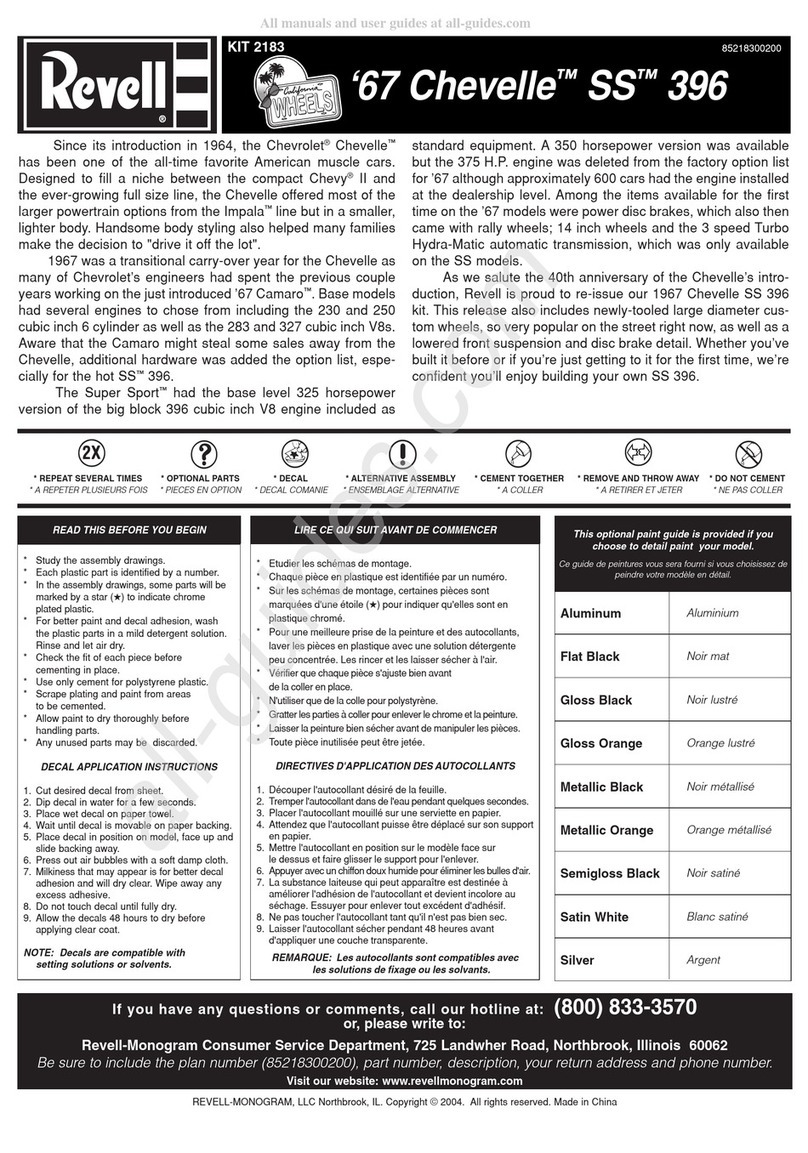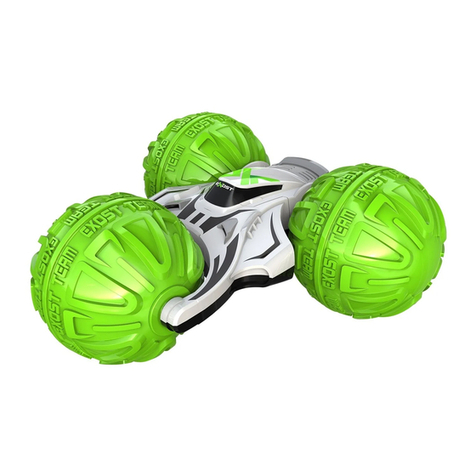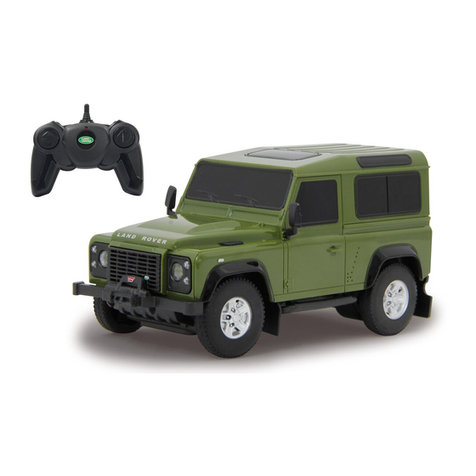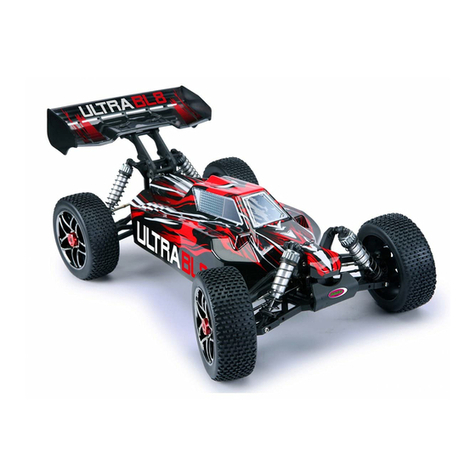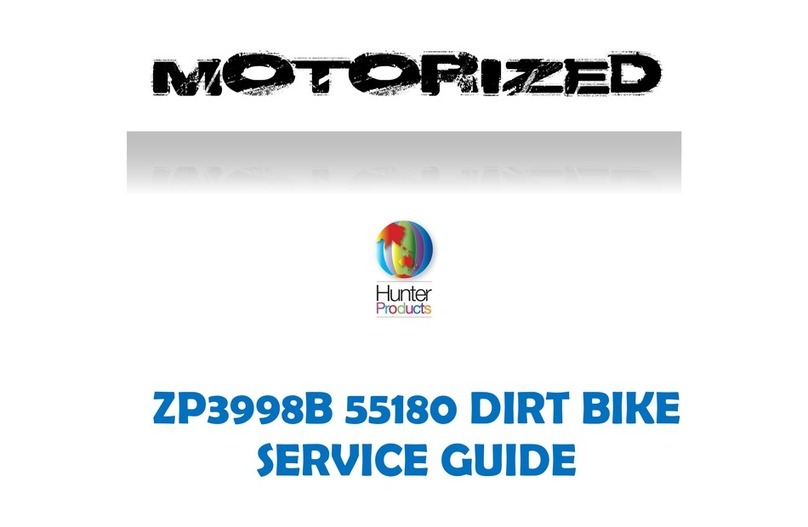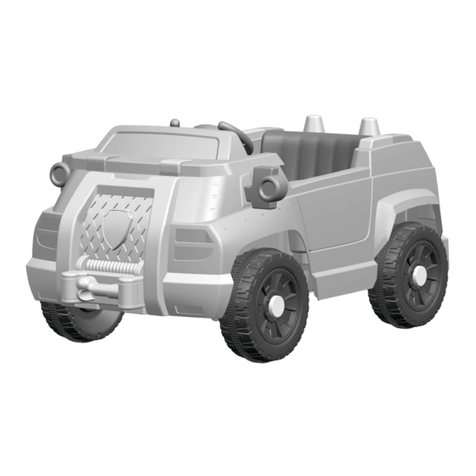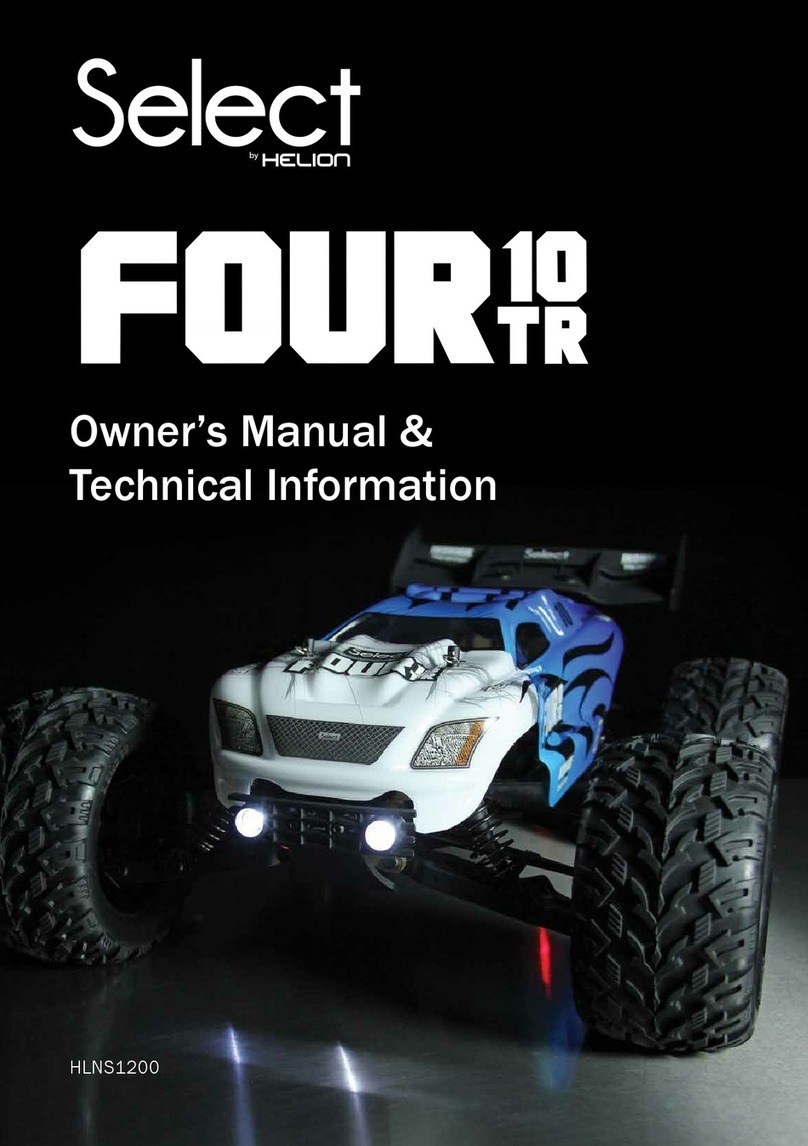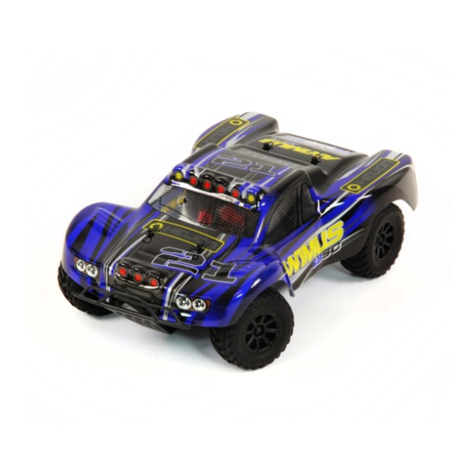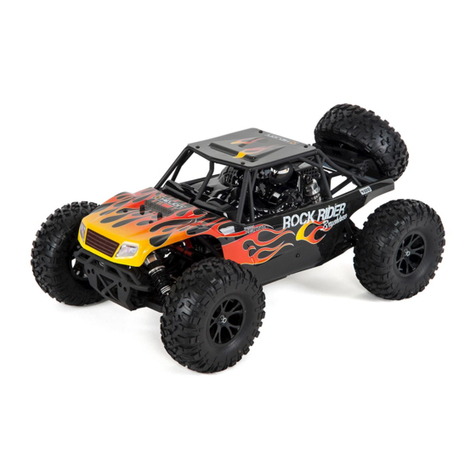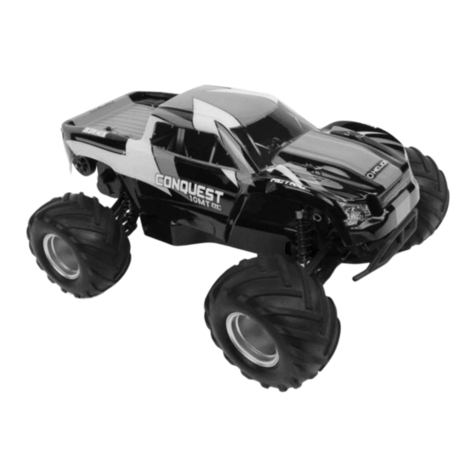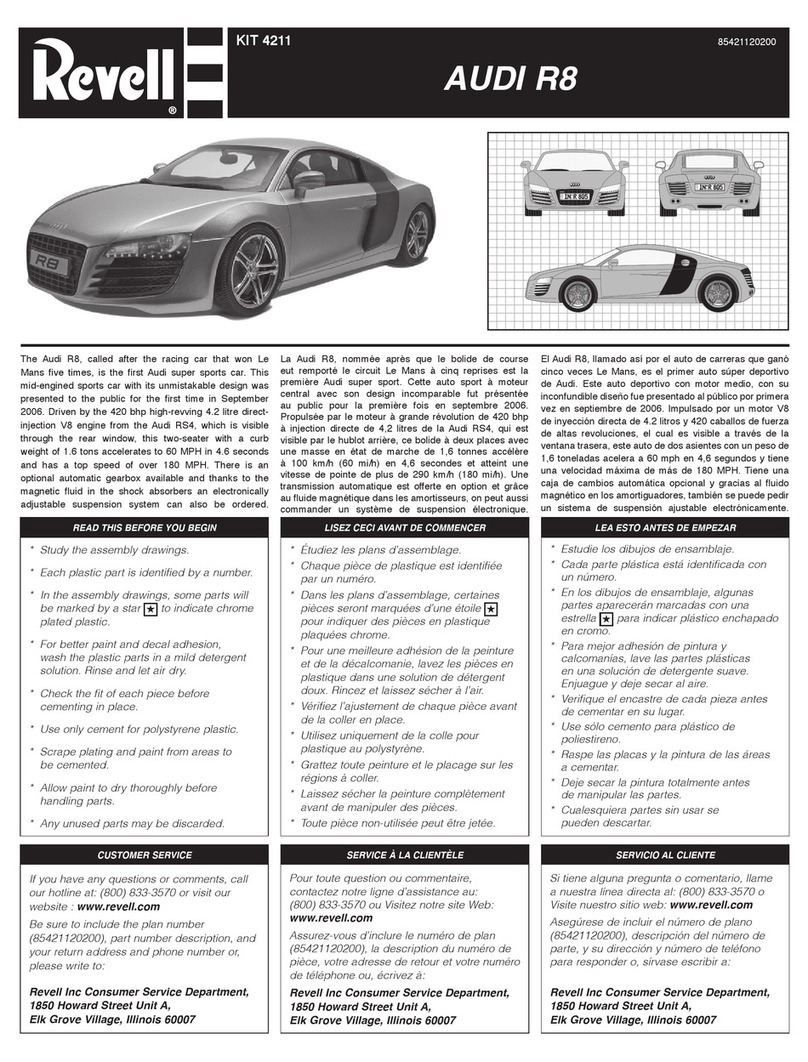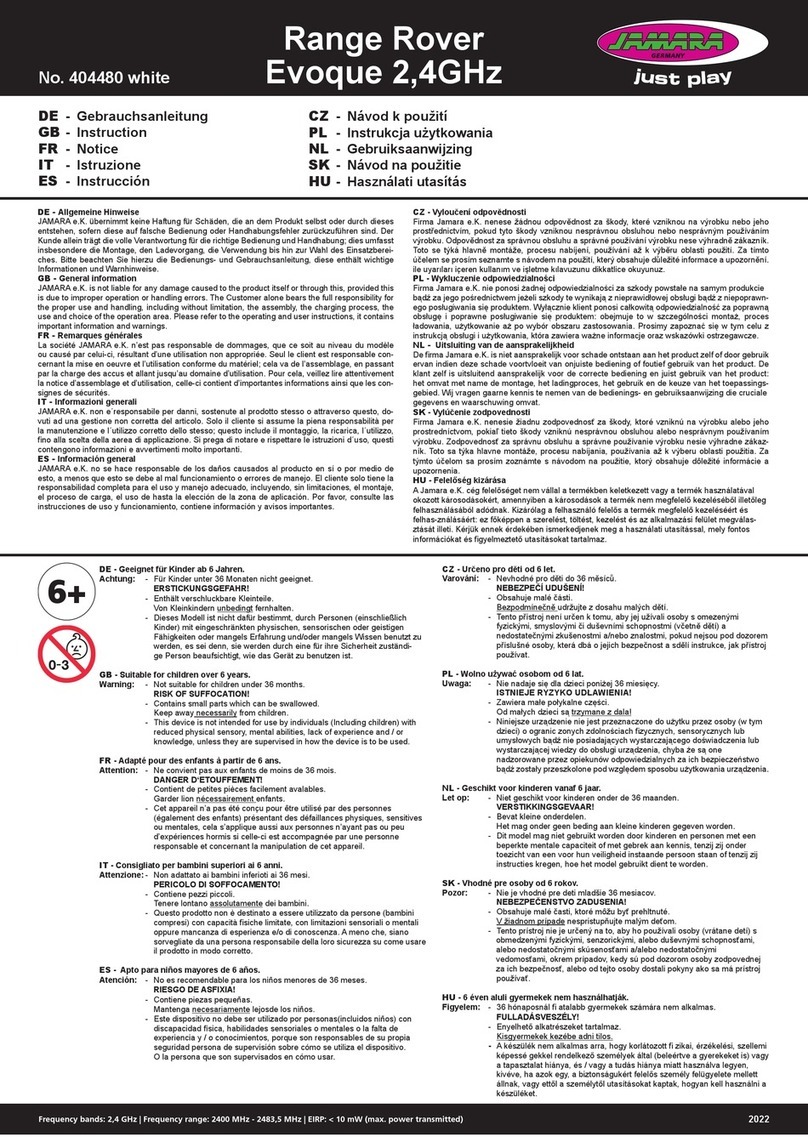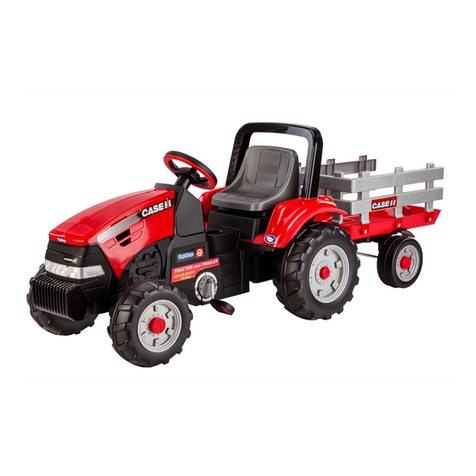...GENERAL CARE AND MAINTENANCE CONTINUED
16
pairs or seek assistance. Continued use of failed components can cause more unnecessary damage to your product. Always
remember to use genuine replacement parts from your local hobby dealer. Below is a list of items for inspection. Inspection
should not be limited to this list; if you notice any problem, listed or not, it is recommended to give it proper attention.
1. Electronics: Although the ESC and servo included in your vehicle are all weather the receiver is not, however it is con-
tained in a water resistant box. It is recommended that you avoid submersion of the vehicle however light running in
puddles and light rain should not be damaging. If you plan to run for extended periods of time in light or heavy rain It
is recommended to secure the receiver in an additional all weather membrane. Since the Helion HRS3.2 receiver is a
micro size receiver, tting it into a balloon is fairly easy. Simply insert the receiver with connected wiring into a balloon
and secure the balloon around the wires with an additional rubber band as close to the receiver as possible, allowing
the most exposure of the antenna as possible. You could also purchase our KNNS0008 All-Weather Receiver.
2. Antenna: To achieve full operating range with your radio system, it is critical that the receiver antenna be installed prop-
erly and undamaged.
a. Inspect any exposed antenna for cuts or abrasions.
b. Ensure there are no kinks in the antenna or antenna tube.
c. Never fold the end of the antenna over the tube, this will reduce the range and damage the antenna.
d. Ensure the antenna is not being pinched by the set screw that holds the antenna tube in place.
3. Gears: Periodically remove the gear cover to clearly inspect the gears and ensure there is no debris in the gear compart-
ment.
a. Proper gear mesh setting is crucial for proper operation and life of gears in your product. It is important to have the
pinion gear (attached to motor) as close to the spur gear (attached to drive shaft) as possible yet while providing
a minimal amount of backlash. Backlash is the rotation one gear has to make before contacting the other. Having
the gear mesh set too tight will cause excess load on the electrical components and may cause premature failure.
Having gear mesh set too loose will cause excess wear and possible skipping of teeth during operation thus causing
excess wear and premature failure.
b. Checking the gear mesh and setting proper backlash.
i. Remove the spur gear cover.
ii. Check how much movement is allowed (backlash) of the spur gear before the pinion gear moves (this is purely
by feel, not visual). Check this movement in multiple places by rotating the spur gear approximately 1/6 rotation
and checking again.
iii. If the spur gear is allowed to move more than a very small amount, or if it there is no backlash, the gear mesh
must be adjusted. If there is a lot of movement, it is recommended to attempt to tighten the mesh. Attempted
adjustment should only improve the situation; if the mesh was correct to begin with, you will know what that
feels like, and if it wasn’t correct, it will be when you are done after following these procedures.
iv. Setting the gear mesh.
01). Loosen the top screw securing the motor plate to the motor mount, only enough to allow the plate to
move. Check and ensure there is no debris in the gears affecting the mesh.
02). Slide the top of the motor plate away from the center of the chassis, insert a strip of notebook paper be-
tween the pinion and spur gear, then slide the motor plate back until there is no backlash. You will have to
push relatively hard to ensure the paper is pressed all the way into the teeth.
03). Hold the motor snugly in position while retightening the screw.
04). Rotate the spur gear to feed the paper out of the mesh, re-check the gear mesh and adjust again if neces-
sary.
v. Re-install the spur gear cover.
WARNING: Never operate your vehicle with the spur gear cover removed. Severe injury, damage to electrical components,
and excessive wear and tear on drivetrain may result.
4. Slipper Clutch Adjustment: The slipper clutch is used to limit the maximum torque that is transferred from the motor to
the wheels, and thus the ground. This is setting varies for different surfaces and thus is important to get correct for each
surface that you operate your vehicle on. Setting the slipper clutch properly will allow for maximum traction and acceler-
ation. Over tightening the slipper clutch can lead to excessive drivetrain wear and eventually damage. Running a setting
that is too loose will cause the vehicle to under-perform and could cause the clutch to overheat and cause damage to
the spur gear.
a. General guidelines for setting the slipper clutch.
i. When running on a surface with a lot of traction or when running a faster motor, the clutch should be tightened.
ii. When running on a surface with low traction or when running a slower motor, the clutch should be loosened.
iii. If the slipper clutch has been run with a setting that is too loose, the slipper pads will experience excessive wear
and may need replacement. See the spare parts guide at the back of this manual for assistance with locating
the parts you need to service your vehicle.
iv. If the slipper clutch is set too tight on high traction surfaces, the front of the wheels may come off the ground,




















